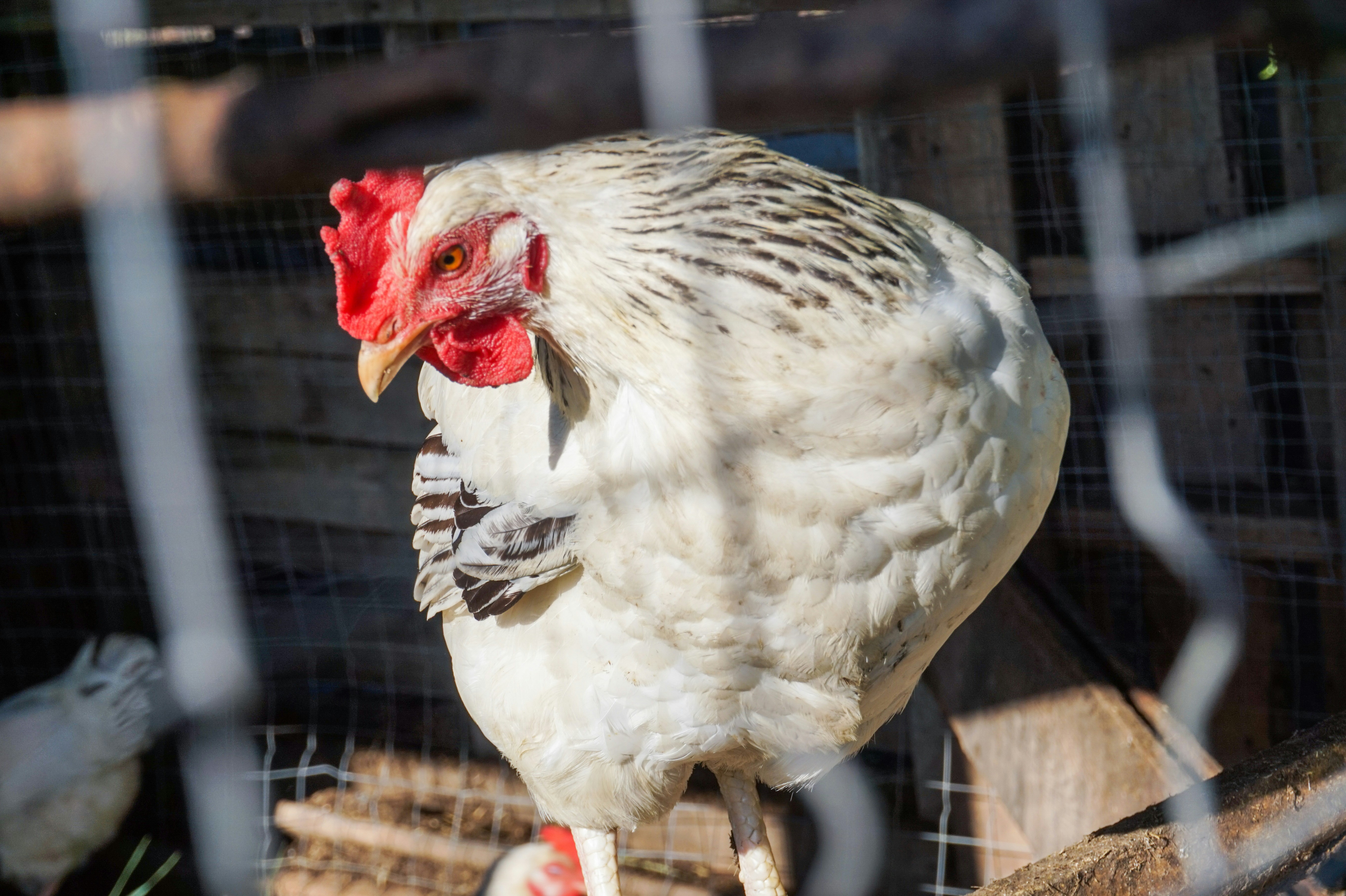
Caring for baby chicks and other young animals, such as kittens, can be enjoyable and fulfilling, but it is crucial to know the fundamentals of keeping them warm and healthy. Heat lamps are commonly employed to control the temperature within chick coops or pet enclosures, yet there are numerous other methods available to ensure the safety and comfort of your furry companions.
This blog post will examine your various options for using a lamp to keep animals warm. It will cover how long chicks, ducklings, and puppies should remain under a lamp for ideal health, the suitable wattage of heat lamps for different species, and methods to ensure turtles and other reptiles stay warm with a heat lamp.
Additionally, we'll explore the significance of monitoring ambient temperatures when raising animals outdoors and address some common questions regarding heat lamps. By the conclusion of this post, you'll possess all the advice needed to maintain your animals at their optimal temperature!
Understanding Heat Lamps
A heat lamp is a device designed to emit infrared radiation, offering warmth to a designated area. A typical setup includes a bulb or lamp, a reflector, and a fixture. In a variety of environments, such as homes, restaurants, veterinary clinics, and farms, heat lamps are frequently utilized. They offer warmth to animals like pets and livestock and maintain food temperature in commercial kitchens.
Various types of heat lamps include heat bulbs, infrared bulbs, and infrared lamps. Available in a range of sizes and power levels, their energy consumption varies based on their wattage. Though effective as heat sources, heat lamps can present fire risks if not used correctly. Therefore, it is crucial to adhere to safety guidelines when operating a heat lamp.
Duration for Chicks to Require a Heat Lamp
For most poultry farmers, using a heat lamp is crucial to keeping chicks warm. Chicks need continuous warmth, particularly in their initial weeks, as they are highly sensitive to cold during this period. A lamp supplies the essential warmth for chicks to flourish.
Heat lamps have varying power consumption rates, and the required wattage depends on factors such as the number of chicks, the temperature range, and the size of the brooding area. The heat source must be positioned at a safe distance from the chicks, and the temperature should be checked frequently to avoid overheating or chilling.
For the initial four to six weeks of their lives, chicks generally require a lamp. In the first week, the brooder's temperature should be kept at approximately 90-95°F, then it should be gradually reduced by 5°F each week until the birds develop full feathers and can control their own body temperature.
Ways to Keep Baby Chicks Warm Without Using a Heat Lamp
Although heat lamps are the most prevalent method for providing warmth to chicks, they are not the sole option available. Infrared bulbs and lamps can supply the required heat; however, it's important to be cautious of materials that could catch fire and potential fire risks.
An alternative method is to use a mother hen for warming the chicks. This approach is ideal for small groups of chicks, offering them crucial warmth, comfort, and direction. Reflectors can channel warmth from a heat source towards the chicks, keeping them comfortable and warm.
When Are Chicks Ready to Be Outdoors Without a Heat Lamp?
Once chicks are fully feathered, they can go outside without a lamp and maintain their body temperature. This typically occurs at around six weeks old, influenced by the breed and climate. Nevertheless, it's crucial to provide them with a sheltered space where they can escape if they become cold or wet.
Duration of Heat Lamp Use for Ducklings
Ducklings, like chicks, require warmth in the initial weeks of their lives. To thrive, they need a continuous source of heat, with a lamp being the most common means of supplying this warmth.
The required wattage is determined by the number of ducklings, the temperature range, and the size of the brooding area. The heat source must be positioned securely away from the ducklings, and the temperature should be checked frequently to avoid overheating or chilling.
Ducklings generally require a lamp during the initial four to six weeks of their lives. In the initial week, the brooder temperature should be kept at approximately 90-95°F, then lowered by 5°F each subsequent week until the birds are fully feathered and can control their own body temperature.
Ideal Duration for Puppies Under a Heat Lamp
Young animals, including puppies, need warmth to flourish. A heat lamp is a typical method for supplying warmth, particularly for orphaned or newborn puppies.
Ensure the heat source is safely positioned away from the puppies, and consistently monitor the temperature to avoid overheating or chilling. For the initial two to three weeks of life, puppies usually require a lamp, with the duration depending on their breed and the climate.
Positioning a Heat Lamp for Chicks
Properly positioning a heat lamp for chicks is crucial for their health and well-being. Heat lamps should be equipped with reflectors to direct warmth toward the chicks. To prevent the chicks from becoming too hot or too cold, the heat lamp must be positioned at an appropriate distance.
As a general guideline, position the lamp approximately 18 inches above the chicks, though this distance may vary based on the heat lamp type and the brooder's dimensions. In their first week, chicks thrive in a temperature range of 90 to 95 degrees Fahrenheit, which should be reduced by 5 degrees each week until they develop full feathers.
Optimal Temperature for Pigs Requiring a Heat Lamp
Pigs are sensitive to fluctuations in temperature, so ensuring an appropriate environment is vital for their health and welfare. Generally, piglets need a warm and draft-free setting to flourish. A heat lamp offers essential warmth and comfort for young piglets.
During the piglets' first week, it's important to closely monitor the temperature in their area, ensuring it stays between 70 and 85 degrees Fahrenheit. Subsequently, the temperature can be decreased slowly by 5 degrees each week until it reaches approximately 60 degrees Fahrenheit. Installing the lamp at an appropriate distance from the piglets and routinely checking it is crucial to prevent overheating or underheating.
Ways to Warm a Turtle Without Using a Heat Lamp
Turtles are ectothermic animals that depend on external heat to maintain their body temperature. Heat lamps are a common and effective method to warm turtles, but they can be costly and may present a fire risk if not used properly.
Alternative methods are available to keep a turtle warm without using a lamp. A method is to position a heating pad beneath the tank. This offers a cozy area for the turtle to bask and manage its body temperature. An alternative is a ceramic heat emitter, which offers heat without emitting light and can operate continuously throughout the day.
Selecting an appropriate heating option that offers adequate warmth for the turtle without causing the enclosure to overheat or become excessively dry is crucial. To ensure the turtle's health and well-being, it is essential to monitor temperature and humidity levels.
Optimal Temperature for Using a Heat Lamp with Chickens
Chickens are resilient birds capable of enduring various temperature extremes. Nevertheless, for young chicks to thrive, they need a warm environment free from drafts. A heat lamp can supply young chicks with essential warmth and comfort.
During their first week of life, chicks thrive best at a temperature range of 90 to 95 degrees Fahrenheit. Subsequently, the temperature can gradually be lowered by 5 degrees each week until they are completely feathered. Position the lamp at an appropriate distance from the chicks and frequently check it to prevent overheating or underheating.
Summary
In summary, heat lamps are crucial for maintaining the warmth necessary for the health and well-being of baby chicks, ducklings, puppies, and pigs. Heat lamps supply essential external warmth for the animals, aiding their development and ensuring their safety from harm.
The appropriate temperature for using a lamp varies according to the species. For example, chickens require a heat lamp set at 95°F, while pigs need it at 90°F. Turtles can live for a period without a heat lamp, but not as long as other species because of their slower metabolism.
Moreover, when selecting a lamp for specific species, it's crucial to evaluate the wattage. Bearded dragons, for instance, need a lower wattage compared to other animals because they are sensitive to light and heat. Finally, it's crucial to determine when to remove the heat lamp from young animals like chicks or ducklings; they should be moved outdoors once they can maintain their body temperature with minimal support from external warmth sources like feathers or fur.

